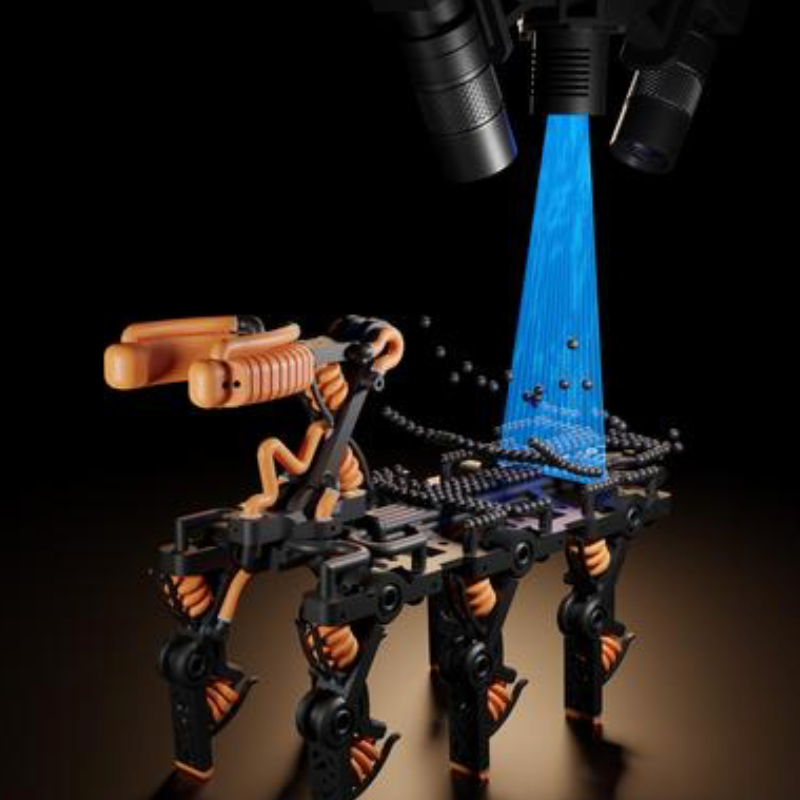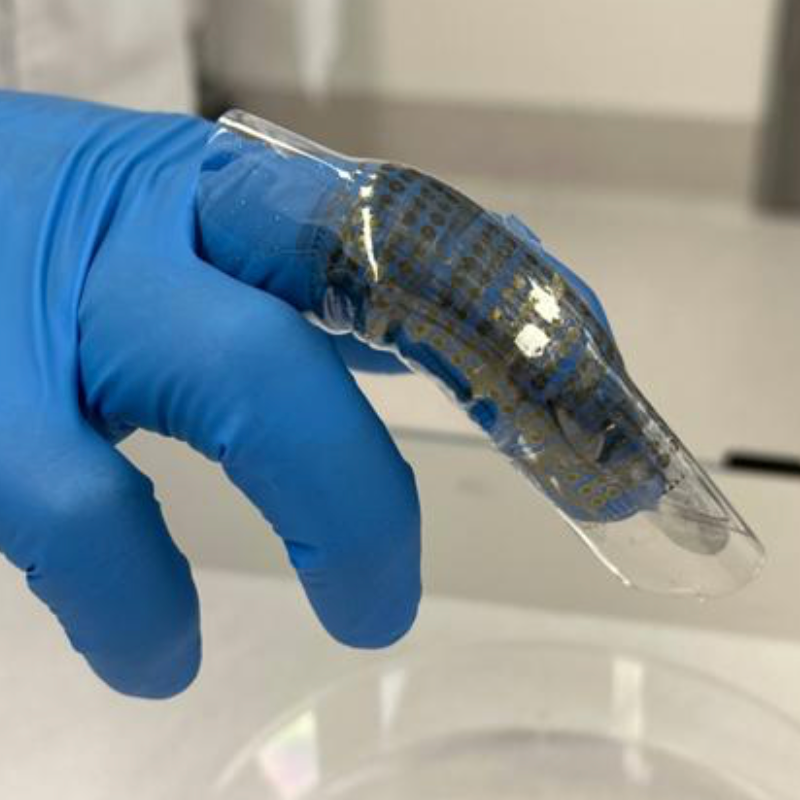MIT researchers invent rapid 3D printing with liquid metal
Jan. 27, 2024.
2 min. read
2 Interactions
10 times faster (can also be larger at lower cost) than a comparable metal additive manufacturing process
MIT researchers have developed an additive manufacturing (building one layer at a time—”3D printing” is part of the process) technique called liquid metal printing (LMP). Using liquid aluminum, it can rapidly print large-scale parts like table legs and chair frames in a matter of minutes.
The method deposits molten aluminum along a predefined path into a bed of tiny glass beads and deposits it through a nozzle at high speeds. Large-scale parts can be printed in just a few seconds (the molten aluminum cools in several minutes).
The aluminum quickly hardens into a 3D structure. The researchers say LMP is at least 10 times faster than a comparable metal additive manufacturing process, and the procedure to heat and melt the metal is more efficient than some other methods. It can also print components that are larger than those typically made with slower additive techniques, and at lower cost.
Low resolution (best for larger structures)
However, the technique sacrifices resolution (the number of dots per inch a printer can deposit) for speed and scale. But the technique would be suitable for some applications in architecture, construction, and industrial design, where components of larger structures usually don’t require extremely fine details. It could also be utilized effectively for rapid prototyping with recycled or scrap metal.
In a recent study, the researchers demonstrated the procedure by printing aluminum frames and parts for tables and chairs that were strong enough to withstand postprint machining. They showed how components made with LMP could be combined with high-resolution processes and additional materials to create functional furniture.
“But most of our built world—the things around us like tables, chairs, and buildings—doesn’t need extremely high resolution. Speed and scale, and also repeatability and energy consumption, are all important metrics,” says Skylar Tibbits, associate professor in the Department of Architecture and co-director of the Self-Assembly Lab, who is senior author of a paper introducing LMP.
Significant speedup and cooling
The team chose aluminum because it is commonly used in construction and can be recycled cheaply and efficiently. Bread loaf-sized pieces of aluminum are deposited into an electric furnace, where metal coils inside the furnace heat the metal to 700 degrees Celsius.
The aluminum is held at a high temperature in a graphite crucible, and then molten material is gravity-fed through a ceramic nozzle into a print bed along a preset path. They found that the larger the amount of aluminum they could melt, the faster the printer could go.
The process uses tiny (100-micron) glass beads to cool the metal quickly. They used LMP to rapidly produce aluminum frames with variable thicknesses that were durable enough to withstand machining processes like milling and boring.
Let us know your thoughts! Sign up for a Mindplex account now, join our Telegram, or follow us on Twitter.

.png)

.png)


.png)





1 Comments
One thought on “MIT researchers invent rapid 3D printing with liquid metal”
I saw this technology of yours from Bangladesh go ahead
🟨 😴 😡 ❌ 🤮 💩